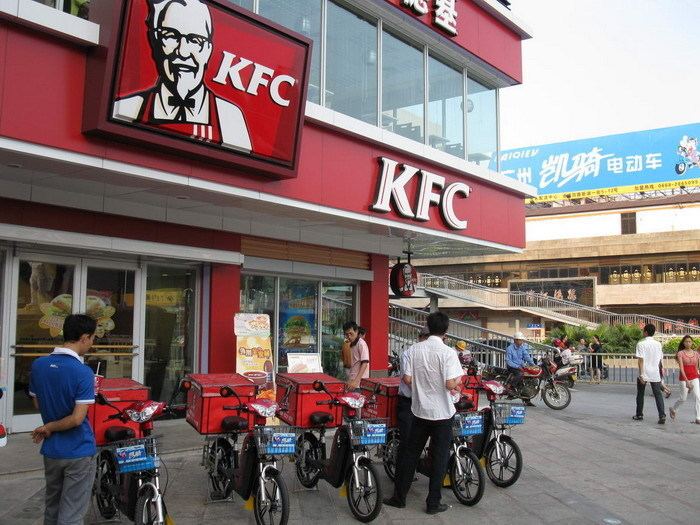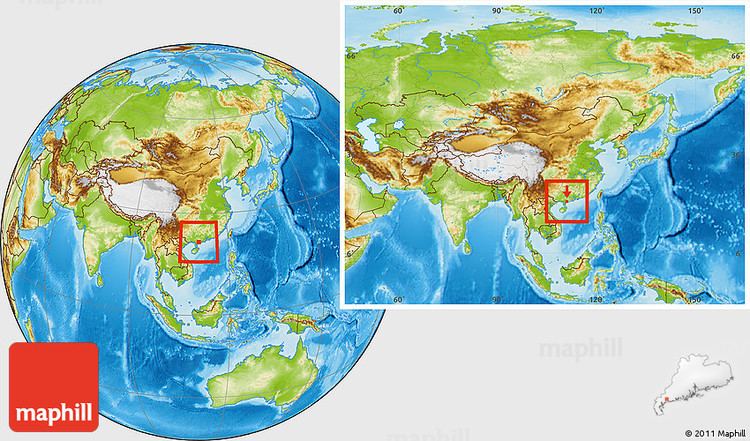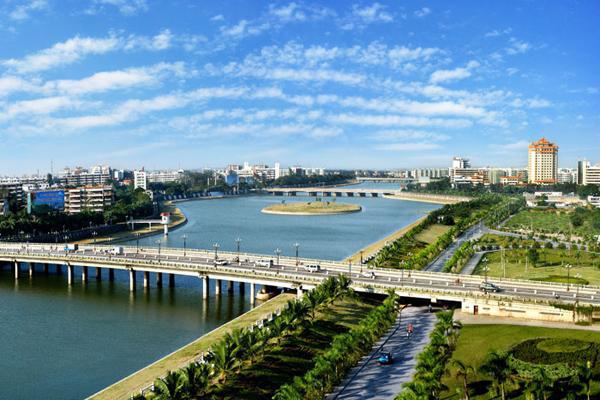Country China Population 644,301 (2000) Mayor Li Hongjun (???) | Area 668 | |
 | ||
Map of Maoming
Maoming, formerly romanized as Mowming, is located in southwestern Guangdong province, China. Facing the South China Sea to the city's south, Maoming city neighbors Zhanjiang in the west and is 362 kilometers (225 mi) from Guangzhou and 121 kilometers (75 mi) from Zhanjiang. The Maoming Port is a Grade I port that handled 16.8 million tons of cargo in 2007. Refined oil and aquatic products are the major export products from the city. Major export destinations include Hong Kong, Macao and ASEAN member nations.
Contents
- Map of Maoming
- Etymology
- History
- Demographics
- Administration
- Geography
- Economy
- Environmental issues
- Highway
- Railway
- Tourist attractions
- References

As of the 2010 census, Maoming had a population of 5,817,494 inhabitants, 2,436,312 of whom live in the most developed area, which includes 2 urban districts (Maonan and Dianbai) even though its built-up (or metro) area is limited to Maonan District with 820,821 inhabitants. The city's birth rate is 11.04‰, and its GDP (2012) was RMB 195.118 billion (US$31.81billion), up by 10.6% over the previous year. According to government sources, Maoming's GDP ranked 7th among Guangdong's 21 cities, and ranked 79th of China's 656 cities in 2012.

Etymology

The city is named after Jin Dynasty Taoist scholar and doctor Pan Maoming (290–371), born in Gaozhou. The local area was renamed by imperial decree in honour of Pan in 598 A.D. during the Sui Dynasty.
History
During the early development of Chinese civilization in the Wei and Yellow River valleys and across the North China Plain, the area around Maoming was held by the Baiyue. After the Qin invaded in the late 3rd century BC, the area was divided into Nanhai, Xiang, and Guilin. Maoming County was established c. 600 under the Sui. Under the Qing, it comprised part of Gaozhou Prefecture. Following the Chinese Civil War, Maoming became the primary community in the area and was raised to county-level city status in 1959.
In 2014, the city was the site of popular protests against p-Xylene, a chemical based on benzene that was being produced by local industry. Since the 18th Party Congress and the ascension of Xi Jinping, Maoming has been one of the "hardest hit" areas of the anti-corruption campaign. It was seen as a city where buying and selling official positions was rampant. The 2014 investigation by central inspection authorities found that some 159 local officials had taken various forms of bribes. The former Communist Party Secretary of Maoming, Zhou Zhenhong, was sentenced to death with a two-year reprieve for corruption in relation to the p-Xylene scandal. Two other former party chiefs, Liang Yimin and Luo Yinguo, were removed from office and sentenced to prison, respectively.
Demographics
The prefecture includes a large number of minority groups, including the Yao, Zhuang, and Miao, giving it diverse cultural activities and folk arts. The people of Maoming speak the Gaoyang dialect of Cantonese, as well as Mandarin.
Administration
The prefecture-level city of Maoming administers 5 county-level divisions, including 2 districts and 3 county-level cities.
Geography
Situated in the southwestern coastal area of Guangdong, Maoming has under its jurisdiction Maonan District, Maogang District, Dianbai County. The city administers the smaller cities of Xinyi, Gaozhou, and Huazhou at the county level.
Maoming's coastline is 220 kilometers long. The "First Shoal of China" resort is 25 kilometers (16 mi) from downtown Maoming.
Economy
Maoming was called one of "the top 100 developed cities in China" and the "National Garden City". Maoming is one of the largest petrochemical production areas in South China, and one of the largest fruit production areas. Other major industries include tilapia culture and processing, winter-planted vegetable production, and other energy, material, and heavy-chemical industrial production.
Major Economic indicators (2012)
GDP: RMB 195.118 billion (US$31.81 million), 10.6% up
GDP Composition:
GDP Per Capita: RMB 33,537(US$5467.93), 8.9% up
Unemployment Rate: 2.5%
Fixed Asset Investment: RMB 18.01 billion (US$2,64 billion), 23.5% up
Utilized FDI: US$31 million, 44.2% down
Total Import & Export: US$673 million, 9.1% down
Export: US$532 million, 7.4% up
Import: US$141 million, 42.5% down
Sales of Consumer Goods: RMB 60.1 billion (US$8.8 billion), 20.3% up
Environmental issues
In March 2014, local people staged a protest over the production of paraxylene, a chemical used to make fabrics and plastic bottles at a plant run by the local government and state-owned Sinopec, China's biggest refiner.
Highway
Maoming can be reached by the Maozhan Expressway, which is linked to the Kaiyang Expressway and Fokai Expressway, which leads to the provincial capital, Guangzhou. Guangzhou is a 5 - 6 hour commute from Maoming.
Railway
Maoming is served by the Guangzhou-Maoming Railway, which runs east to the provincial capital, the Hechun-Maoming Railway, which runs west to the Litang-Zhanjiang Railway, and the Luoyang–Zhanjiang Railway, which runs north through eastern Guangxi and central Hunan to China's Central Plain.
Tourist attractions
Maoming is home to the No. 1 Shoal of China Vacation Area (中国第一滩), Chicken Island (Guangdong) (放鸡岛) and Tianmashan (天马山) Eco-tourist Area, the Temple of Madam Xian (冼太庙 ; Xiǎn Tài Miào) in Gaozhou, and the Genzi Litchi Cultural Tourist Area.
The No.1 Shoal of China Vacation Area is 25 kilometers (16 mi) from the downtown Maoming, in the Maogang District. With miles of fine beach outside the shelter belt, tourists can enjoy parachute gliding and sailboarding. It is also a national training center for beach volleyball, and often hosts national and international competitions.
Chicken Island is the largest island in Maoming, covering an area of 1.9 km2. This tourist resort is a diving center, boasting clear and pristine sea water. It is known for its coral reefs and recreational scuba diving. Skin diving, deep diving, and explorational diving are available as well.
The Temple of Madam Xian was constructed in 1535 in memory of Madam Xian, who was the female leader of the Baiyue Tribe. The temple is rich in cultural and historical objects, such as ancient statues, sculptures, and stone inscriptions.
Maoming is a famous litchi production area. The Genzi Litchi Cultural Tourist Area is situated in Genzi, a small town in Maoming.
Maoming's most popular local specialty foods include Huazhou Baiqie Chicken (白切鸡), Gaozhou Salted Chicken (盐焗鸡 yánjú jī), Fenpi (粉皮), Genzi Beef Rice Noodles and Xinyi Huaixiang Chicken.
Downtown Maoming is a comfortable walking city, great for just wandering into shops. A downtown park comes alive at night as couples and families stroll.
Maoming is accessible from Guangzhou (approximately four hours by train or a first class bus). Two train stations serve Maoming, one downtown that provides the connection to Guangzhou and points to the north, and one a few minutes south of town that connects to the south and west.
